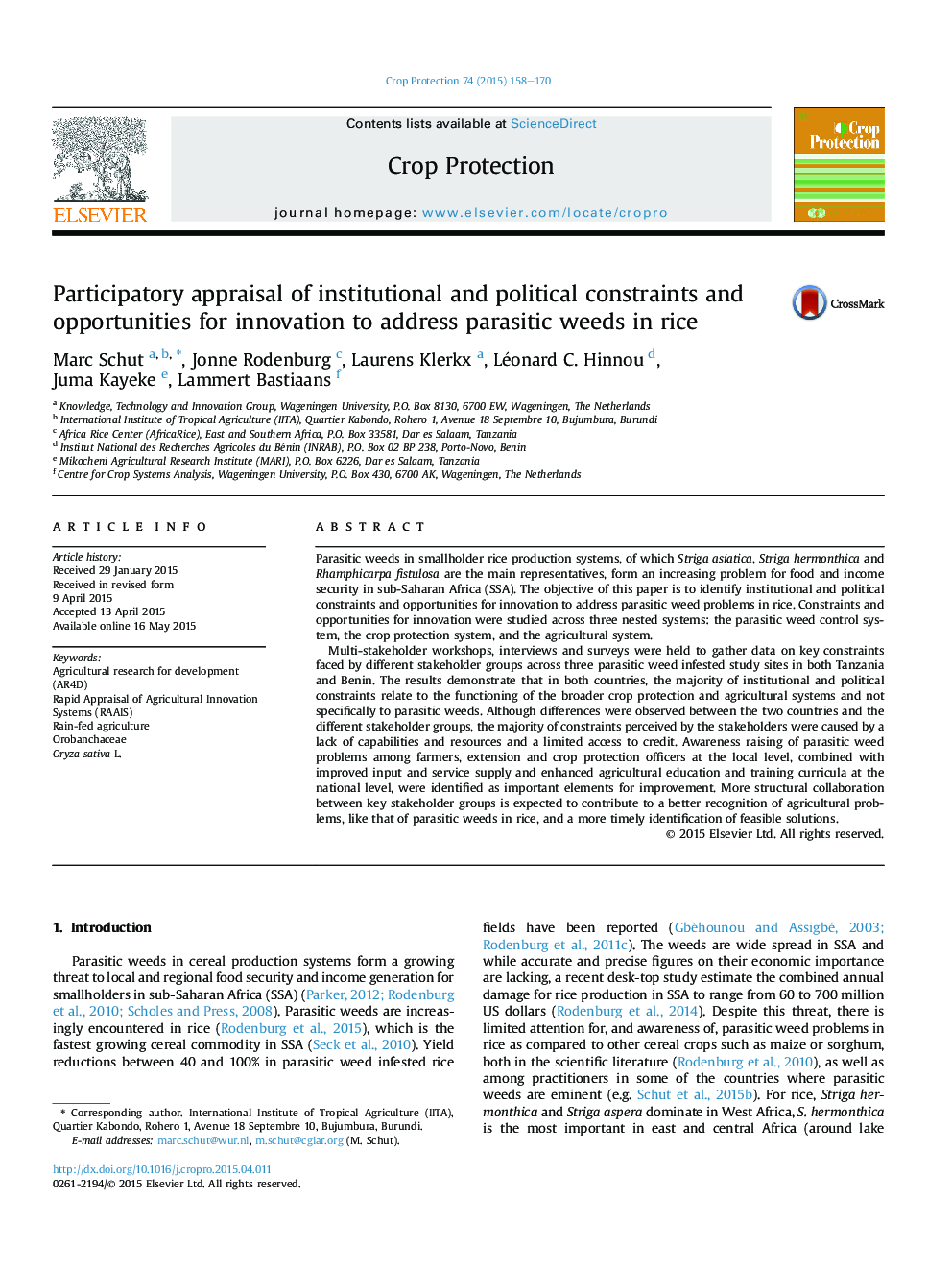| Article ID | Journal | Published Year | Pages | File Type |
|---|---|---|---|---|
| 4505755 | Crop Protection | 2015 | 13 Pages |
•Institutional and political dimensions of parasitic weed problems are underexposed.•Constraints are often embedded in broader crop protection and agricultural systems.•Examples include: access to credit, high quality inputs, information and training.•Stakeholder groups are interdependent and collaboration is key in overcoming constraints.•Multi-level strategies are needed to foster coherent research, development and policy strategies.
Parasitic weeds in smallholder rice production systems, of which Striga asiatica, Striga hermonthica and Rhamphicarpa fistulosa are the main representatives, form an increasing problem for food and income security in sub-Saharan Africa (SSA). The objective of this paper is to identify institutional and political constraints and opportunities for innovation to address parasitic weed problems in rice. Constraints and opportunities for innovation were studied across three nested systems: the parasitic weed control system, the crop protection system, and the agricultural system.Multi-stakeholder workshops, interviews and surveys were held to gather data on key constraints faced by different stakeholder groups across three parasitic weed infested study sites in both Tanzania and Benin. The results demonstrate that in both countries, the majority of institutional and political constraints relate to the functioning of the broader crop protection and agricultural systems and not specifically to parasitic weeds. Although differences were observed between the two countries and the different stakeholder groups, the majority of constraints perceived by the stakeholders were caused by a lack of capabilities and resources and a limited access to credit. Awareness raising of parasitic weed problems among farmers, extension and crop protection officers at the local level, combined with improved input and service supply and enhanced agricultural education and training curricula at the national level, were identified as important elements for improvement. More structural collaboration between key stakeholder groups is expected to contribute to a better recognition of agricultural problems, like that of parasitic weeds in rice, and a more timely identification of feasible solutions.
